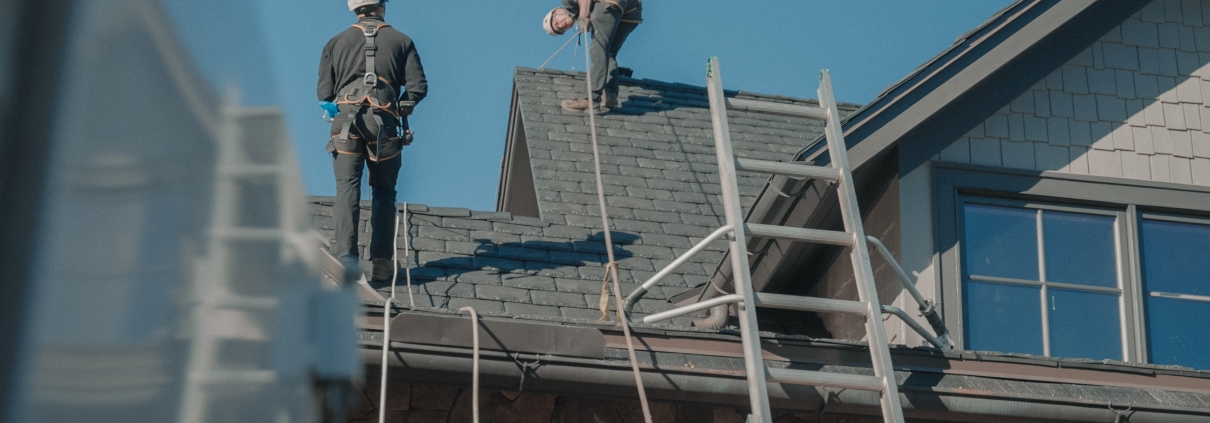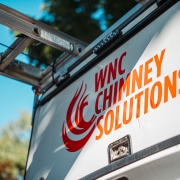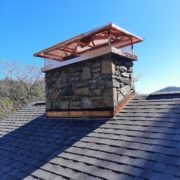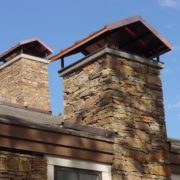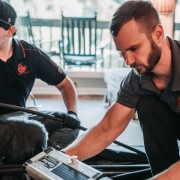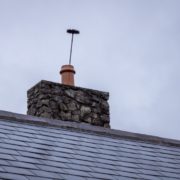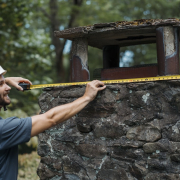Carbon Monoxide Safety and Your Chimney
Chimneys are great, but they’re tricky too. They keep your home cozy and warm, yet a damaged chimney can secretly cause trouble. One big danger is carbon monoxide, which is a silent gas that’s hard to spot. It sneaks out through cracks, and breathing it is risky.
Staying safe from this gas starts with knowing how your chimney might leak and what are the signs that mean trouble. Let’s talk about how chimney issues lead to carbon monoxide problems, spot signs you’re breathing in the gas, and share easy tips to keep your family safe.
How Chimney Leaks Can Lead to Serious Damage?
Chimneys send smoke outside, and they also keep harmful gases like carbon monoxide from sneaking into your home. But if there’s even one small crack, those gases can escape easily. Bricks get loose, linings wear out, and moisture seeps in, making tiny holes grow bigger.
Soon enough, what started small can turn into a big headache. Water mixing with soot and dirt builds up inside, causing even more damage. That buildup slowly weakens the chimney, creating the perfect path for harmful gases.
Carbon monoxide quietly sneaks through these openings and right into your living space. It’s important to notice chimney damage early to stop carbon monoxide from sneaking into your home.
Common Causes of Chimney Breakdown Leading to Carbon Monoxide Buildup Your chimney might look solid from the outside. However, several hidden issues can cause dangerous carbon monoxide to enter your home. Regular wear, harsh weather, and a lack of proper care often trigger chimney problems. Bricks and mortar break down slowly, and they create tiny openings.
Furthermore, moisture can sneak inside and it can cause the chimney structure to weaken. Animals nesting can also clog important vents. It can be a major reason for preventing gases from escaping safely. Even simple things, like heavy snow or strong winds, might cause serious damage over time.
Knowing these common causes helps you catch trouble early and avoid costly repairs and serious health risks. Watch out for the following chimney problems:
- Cracked Chimney Liners – Small cracks let harmful gases leak quietly into your home without warning signs.
- Loose or Missing Bricks – Damaged bricks create gaps that let carbon monoxide escape inside your living space easily.
- Clogged Chimney Caps – Leaves, twigs, and debris block airflow, trapping dangerous gases inside your chimney.
- Rusty or Damaged Dampers – Damaged dampers won’t open properly, causing carbon monoxide to linger instead of safely escaping outdoors.
Carbon Monoxide Poisoning Symptoms to Know About
Carbon monoxide poisoning isn’t easy to spot at first. It can feel like you’re getting the flu or just feeling tired. Because it’s so tricky, knowing what to look out for is super important. Here are some key symptoms:
Feeling Dizzy or Lightheaded
If you suddenly feel dizzy without a clear reason, it might be carbon monoxide causing trouble. Your brain isn’t getting enough oxygen, and it is making you feel wobbly and confused.
Headaches that Don’t Quit
A persistent headache that doesn’t go away might mean carbon monoxide is leaking from your chimney. If stepping outside makes you feel better, take it as a clear warning sign.
Upset Stomach and Nausea
Feeling sick to your stomach or vomiting without knowing why could also be a symptom. Carbon monoxide messes with your body’s ability to work normally, causing tummy troubles.
Tiredness and Weakness
If you suddenly feel sleepy or weak, especially around fireplaces or gas heaters, carbon monoxide might be involved. This gas slows down oxygen delivery to your muscles. As a result, it is making you feel unusually tired.
Shortness of Breath or Chest Pain
Struggling to breathe normally or feeling tightness in your chest is another clue. Carbon monoxide robs your blood of oxygen, and your body tries hard to get air, causing chest pains or breathing problems.
Safety Tips to Ensure Carbon Monoxide Safety for Your Chimney
Being aware of the signs mentioned above can help you act fast. If these symptoms happen, get outside right away and call for help. Furthermore, you should ensure that there is no carbon monoxide buildup
in the first place. Keeping carbon monoxide away is easy if you follow these simple tips. Here’s how to stay safe:
Check Your Chimney Regularly
The first thing you need to do is look for cracks, missing bricks, or signs of water leaks. Fixing these quickly helps keep harmful gases out. Also, checking regularly protects your family by catching chimney problems early. It can prevent unexpected gas leaks and keep your home environment healthy.
Get a Carbon Monoxide Detector
Another thing to do is install alarms near sleeping areas and check them often. They make a loud noise if carbon monoxide is sneaking around your home. These alarms alert you immediately. They give you enough time to evacuate safely and avoid serious health problems related to carbon monoxide.
Annual Chimney Inspection
Hire professionals once a year to inspect and clean your chimney. They’ll spot and fix issues early, stopping gas leaks before they become dangerous. Annual checks and maintenance are vital to prevent unnoticed damage. They make sure your chimney stays safe and effective all year round for worry-free enjoyment.
Keep Your Fireplace Vent Clear
Ensure your chimney vent is clear of dirt or other things, such as:
- Leaves
- Twigs
- Nests
This helps gases escape easily, stopping carbon monoxide buildup. Clear vents mean clean airflow, letting gases safely exit your home without causing dangerous buildups that could harm you or your family.
Open Dampers Fully During Use
Last but not least, always make sure the chimney damper is wide open when using your fireplace. A closed or half-closed damper can trap carbon monoxide inside your home. Fully open dampers help harmful gases exit smoothly. It can reduce risks and make your fireplace safer and easier to use regularly.
Conclusion
Carbon monoxide safety is easy with regular chimney checks and knowing what to watch for. Keep your family safe and stay aware to act quickly if something feels wrong. Contact WNC Chimney today for trusted chimney inspections and repairs!

